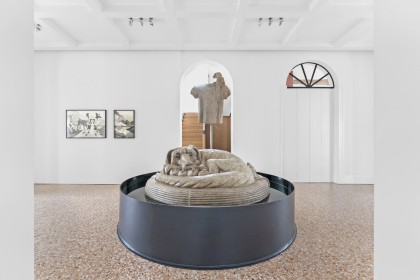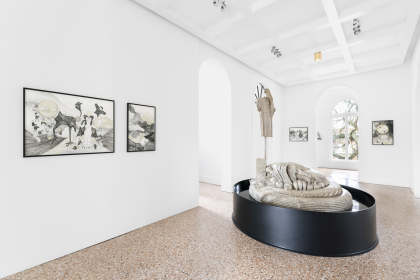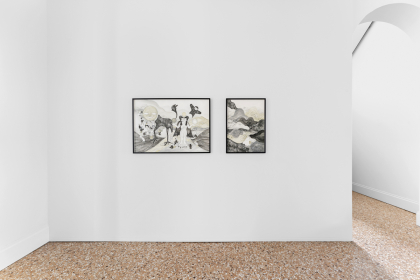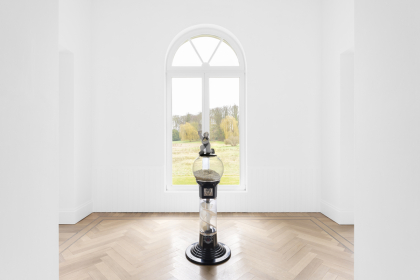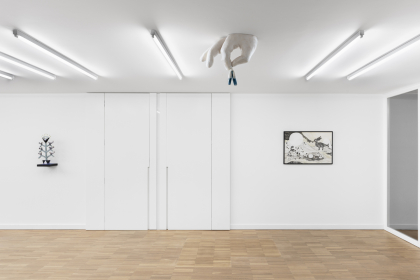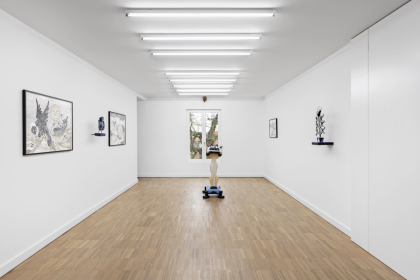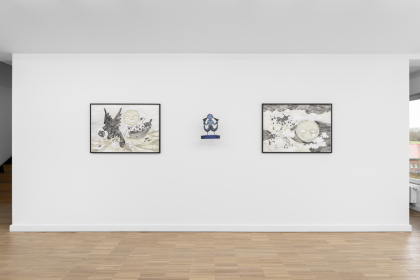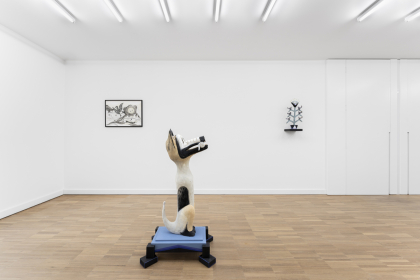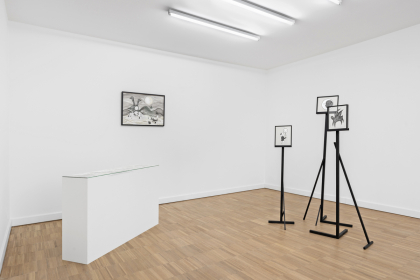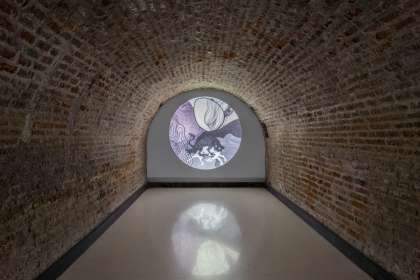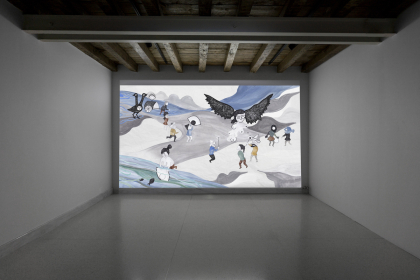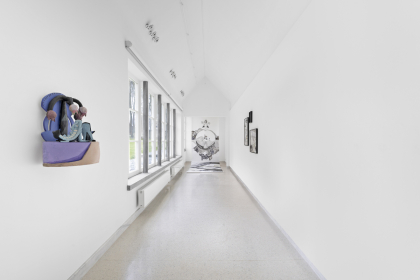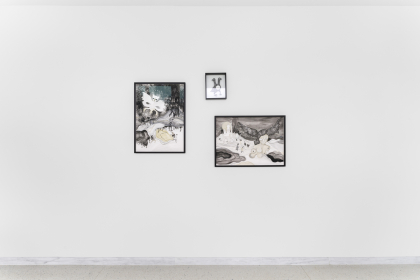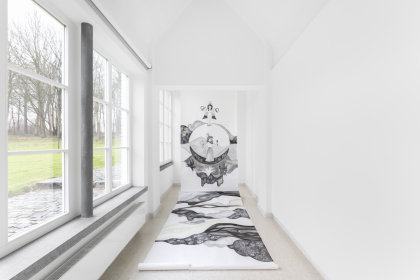
The Wheel of History People measure time by following the natural rhythms of the earth and sky, or by looking at a clock. Language, culture and our knowledge of the universe reflect the way we perceive time. Differing conceptions of time are based on our understanding of physical space and history. We commonly recognise that time is linear and, as it were, moving in one direction: today, tomorrow, now, then, past, present. However, many ancient civilisations, such as the ancient Greeks or the Mayans, adopted a circular conception of time, where the beginning becomes the end and vice versa. This concept also appears in religious and philosophical systems. Circular time is repetitive, familiar and continuous. The circular perception of time is an important reference point in the works of Warre Mulder and Imge Özbilge. Motifs and characters from various, often culturally distant, contexts recur in their works, creating new constellations of meaning. A different understanding of time can be seen as a method of working with historical and iconographic material. In her drawings, paintings and animations, Imge Özbilge reaches for mythology, the earliest literary works, such as Gilgamesh, and the iconography of Middle Eastern miniatures, whose many elements and micro-stories are reflected in contemporary narratives. Popular tales once passed on as an oral tradition and stories that appear in ancient epics have a universal appeal. They tell of the human relationship with nature and reflect on the role of the individual in community and also the role of religion and ritual. The artist points to the trans-temporal nature of mythology, and the constant fusion of popular motifs. In her latest series of works, Özbilge combines the concept of the cyclical nature of time with lunar symbolism and femininity, reminding us of the matriarchal roots of culture. From this angle, the artist also explores Sumerian and Zoroastrian influences on the lunar beliefs of Anatolia, pointing to the role of mythology as a cultural common denominator, where the motifs in circulation become part of a completely different story – with many remaining at the level of the subconscious, in the realm of fairy tales and folklore, harking back to the iconography of childhood, animism and a singular folkloric imagination. Elements of folklore and pagan mythology are also present in the sculptures by Warre Mulder. Figurative works made in traditional materials such as clay, wood or acrylic resin are covered with colourful polychrome, which emphasises their painterly and at the same time ‘totemic’ character. The protagonists of the works are the composite result of numerous studies and cultural contexts. By combining popular images with mythological ones, the artist creates hybrid forms that look familiar. Often, the very process of combining motifs takes the form of an ordinary, spontaneous montage, involving references to mythological creatures such as the centaur, theatrical masks, or pagan mythology. Other performances notably draw on modernism, pop culture, carnival, architectural ornament or folkloric sculpture. Also present in the works of Warre Mulder and Imge Özbilge is the theme of animism, or the perception of the surrounding world, all things – animals, plants, rocks, rivers, weather systems and, in some cases, also words – as animate and alive. The protagonists of Mulder and Özbilge’s stories seem to be part of a more complex system that does not belong to any specific cultural realm but draws on a variety of sources to indicate the hybrid and holistic nature of contemporary times, making us aware of the wheel of history. Joanna Zielińska

